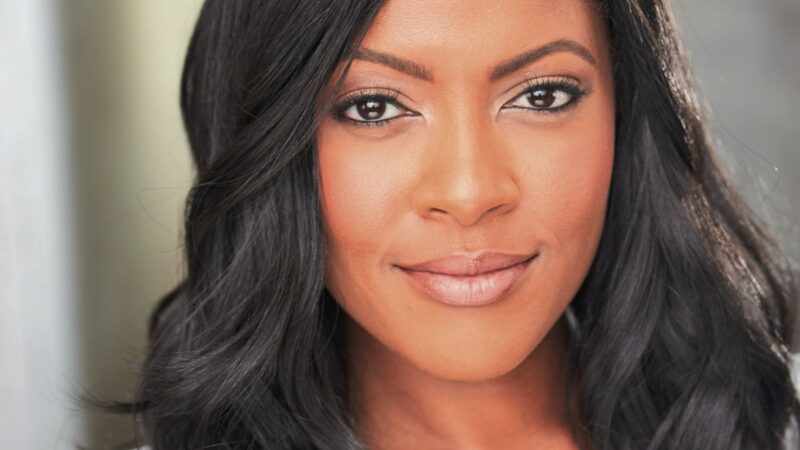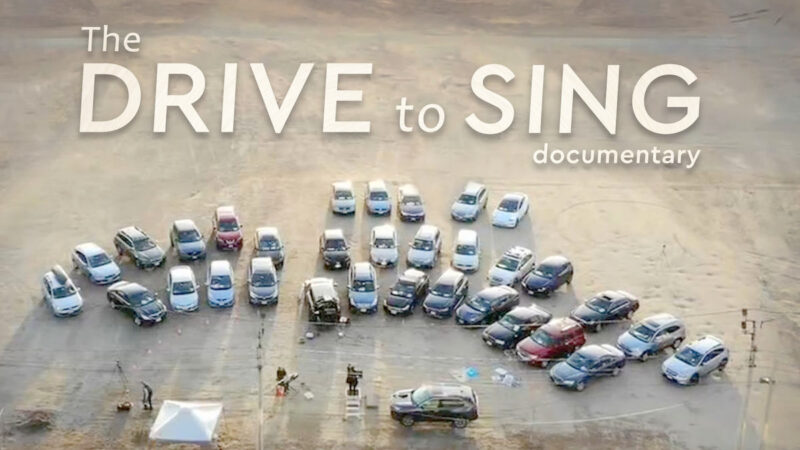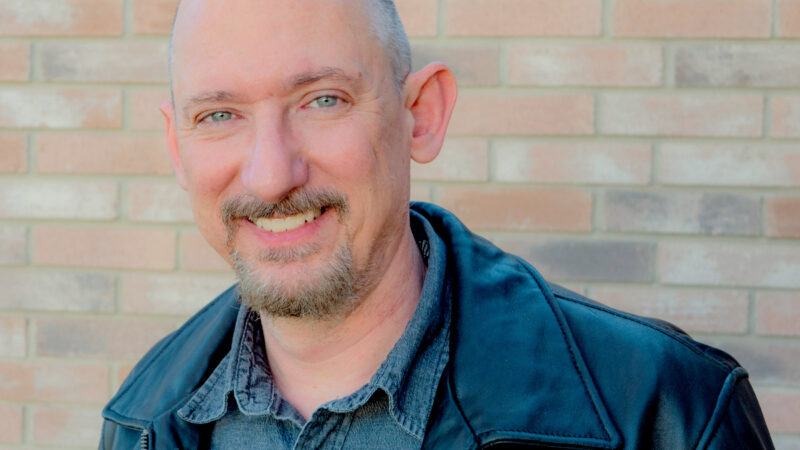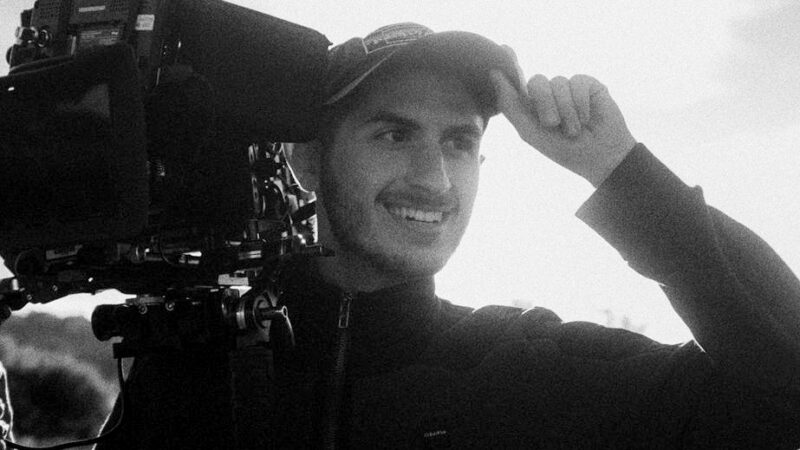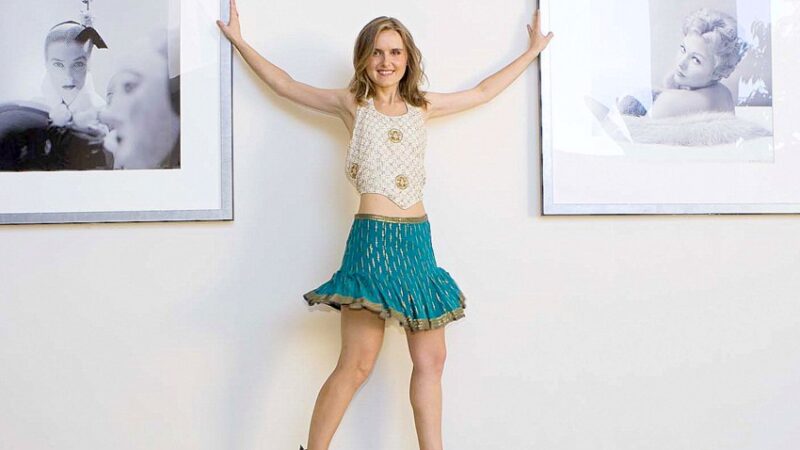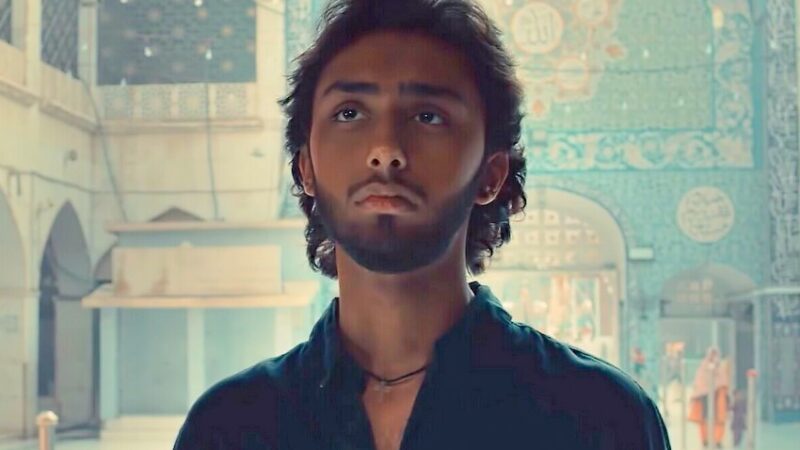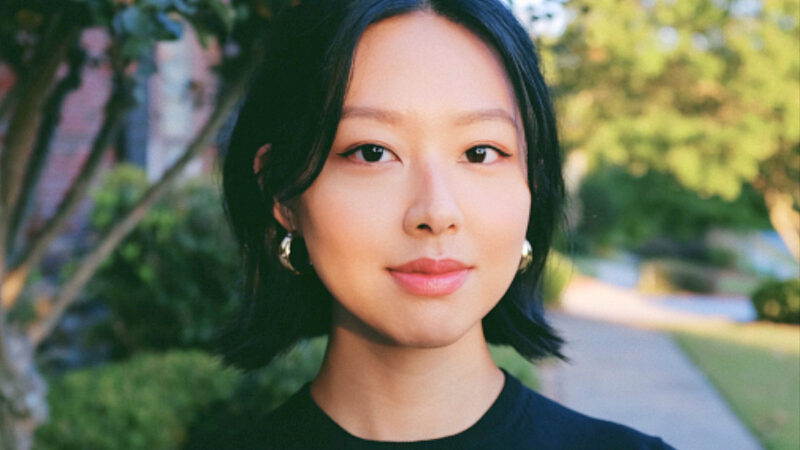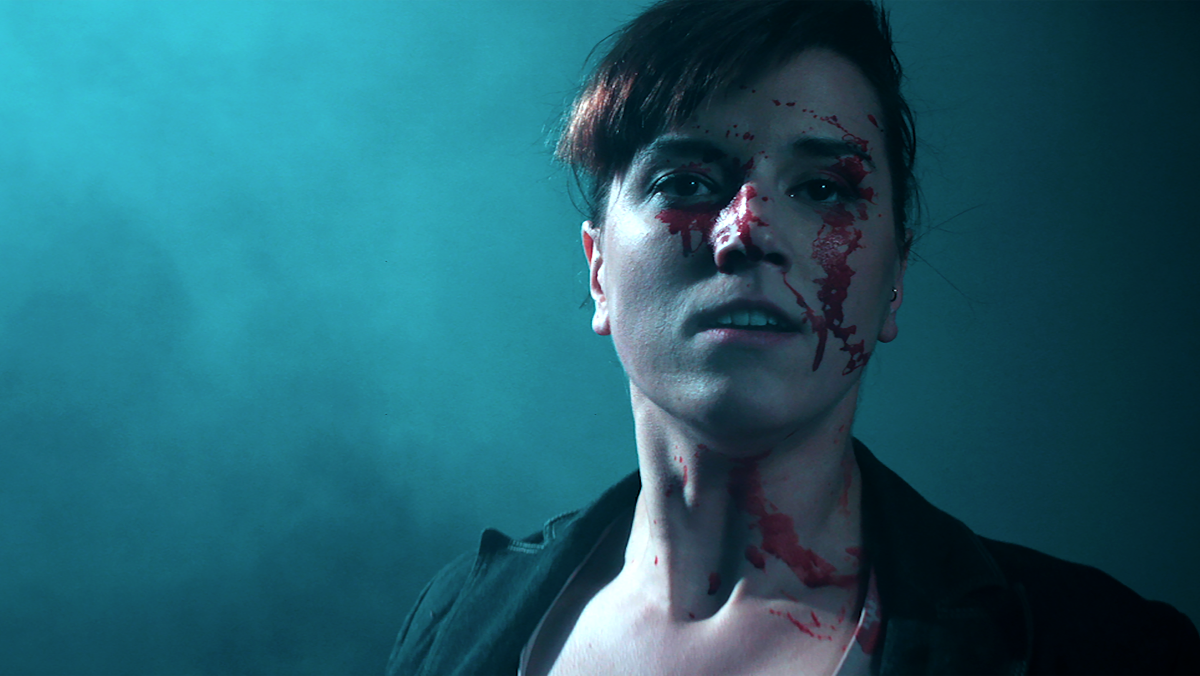
A Case Study
Narrative | Dramatic Features
Film Name: Follow the Dead
Genre: Horror Comedy
Date: Jan 2020
Director: Adam William Cahill
Producer: Adam William Cahill
Writer: Adam William Cahill
Cinematographer: Stephen C. Walsh
Production Company: Wild Stag Productions
Budget: €17,000.00
Financing: Self-funded
Shooting Format: Digital
Screening Format: 2.37.1
World Premiere:
Kerry International Film Festival 2020 (27th Oct.)
Awards: 4 +
1. Kerry International Film Festival
– Winner Best Narrative feature
2. GELOS Comedy Film Festival
– Winner Best Director Adam William Cahill
– Nominated Best Dark comedy
3. Seattle Film Festival
– Winner – Best Comedy Horror Feature Film
– Winner – Best Emerging Director Adam William Cahill
– Nominated – Best Ensemble Cast
– Nominated – Best Actor Luke Corcoran
– Nominated – Best Actress Marybeth Herron
Website: https://www.followthedead.com/
indieactivity: Tell us about “who you are”?
Adam William Cahill (AWC): I’m a Dublin-based filmmaker, born in London and raised in Ireland. I got my Bachelor’s Degree in Film Production from the University of Wolverhampton. I’ve loved movies and been obsessed with the power of stories all my life, but I wasn’t sure of what function I could have within the medium until I was tasked with writing and directing a short film for my final year college project. As soon as I saw the actors perform what I had written, I was sure I wanted to write and direct for the rest of my life. I set up my production company Wild Stag Productions shortly after leaving college. I wrote my first film, Follow the Dead, which we shot in 2017, and I haven’t looked back ever since.
The Official Trailer for FOLLOW THE DEAD written and directed by Adam William Cahill
Introduce your film?
Adam William Cahill (AWC): Follow the Dead is a zombie comedy with a very Irish, tongue-in-cheek flavor. We have a morbid sense of humor, so the comedy is mostly derived from the character’s vulnerabilities and shortcomings. A group of Millennials in rural Ireland are tasked with figuring out whether the viral videos of a zombie outbreak in Dublin are real or fake news. But since we live in a very pampered age where people are infrequently motivated to take matters into their own hands, preferring to let the government take care of all their issues, the family we follow spend most of their time being self-absorbed and careless, which ultimately doesn’t bode well for them. It’s very much a film in the vein of Shaun of the Dead or Zombieland, but very distinctly Irish.
Tell us why you chose to write, produce, direct, shoot, cut/edit the movie? Was it financial, chance, or no-budget reason?
Adam William Cahill (AWC): I wrote the film after initially being presented with a short script by a friend (who plays the lead role in the film), Luke Corcoran, which was about a random zombie attack in a Dublin apartment block. It had all the same humor and ludicrous elements that we also have in the final film, and was a very funny little comedy. But my storytelling sensibilities are very much centered around themes and arcs, and I felt that there was more than could be done with the concept. I had notions of telling a story about how Millennials would deal with overwhelming trauma in this day and age; A level of trauma which – though fantastical in this sense – we rarely ever face in 21st-century life. Are we as capable now of handling ourselves when push comes to shove as previous generations had shown themselves to be? Or have we been weakened by modern comforts, technology, etc.? So Luke graciously allowed me to go and write something different that expanded on the themes and potential of the concept. By the time I went back to him I had a hundred-page script.
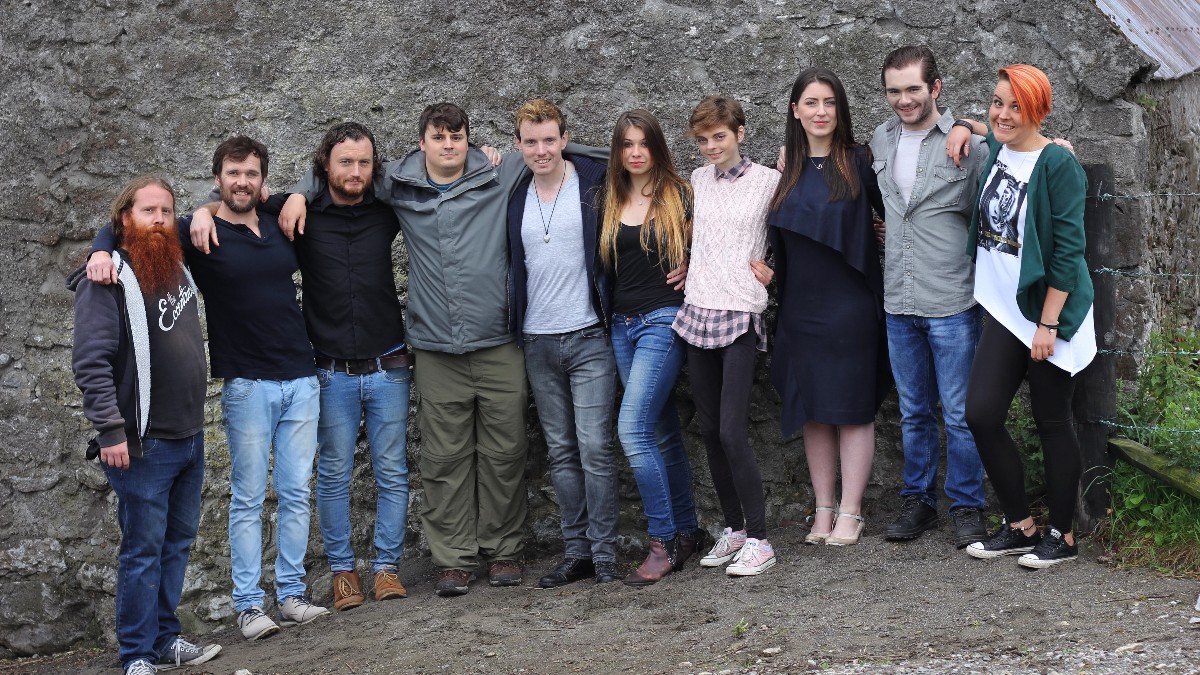
Introduce your crew?
Adam William Cahill (AWC): I literally had the best cast and crew I could have asked for. All the actors were willing to work so hard, often late into the night, and all because they were so passionate about what we were doing. They really believed in it. And thankfully for me, they’re also so incredibly talented. The comedy of the film comes directly from the partnership of Tadhg Devery (Chi) and Luke Collins (Jay) who formed a classic double act the instant they got in front of the camera together; Tadhg with his tremendous turn of phrase who made every line funny, and Luke with his hilarious physicality.
And then the drama and heart of the story is brought to life by Luke Corcoran (Robbie), Marybeth Herron (Liv), and Cristina Ryan (Kate), who were an absolute tour-de-force in presenting the film’s emotional arc, wherein Robbie comes to understand the true dynamic of his relationship with the women in his life, and how that has determined the outcome of his present predicament. All of the actors really were incredible. And then behind the scenes, Stephen C. Walsh, my cinematographer, was an absolute machine. He lit all of the scenes himself, he was preparing things from dusk ’til dawn, and his years of experience on film sets gave me a very strong sense of assurance and security during the entire production.
The film looks as incredible as it does because he is a master at work. My sound designer was Robin Sherry Wood who did an amazing job, not only with the effects and zombie sounds, but there were also instances where (due to noisy generators) some of the recorded audio was unusable, and there are entire scenes where the sound had to be built from the ground up with ADR and Foley work. But Robin did such an outstanding job that you’ll never ever know which scenes they are. I also need to mention my music composer Steve McKenna, who made the most beautiful score for the film. I’ve had so many people tell me how moved they were by the music. There’s a love theme that persists throughout the film, as well as a very effective zombie theme, and thanks to Steve’s tremendous talent at the keyboard, the music makes the sad scenes heartbreaking, the funny scenes hilarious, and the horror scenes so much more terrifying.
Tonally, the task of balancing the film’s dark and humorous elements is carried solely by the music, and I’m so so happy that Steve got on board to do it. Honestly, there are no words to describe how grateful I am to all these incredibly talented guys, (Patrycja Mackowiak, my amazing makeup effects artist, is another gem I need to mention,) and the hundreds of other people involved in the film’s production. A better team does not exist.
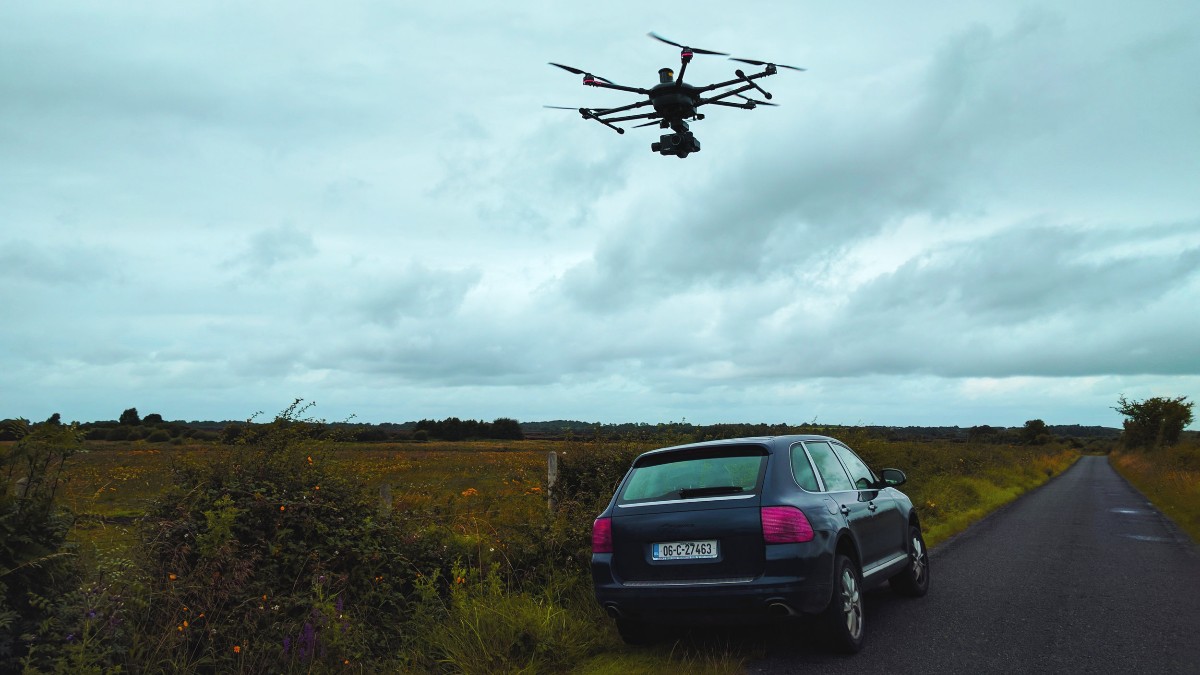
What are your personal experiences putting on all these hats/responsibilities (simultaneously)? Tell us about story, writing, and production?
Adam William Cahill (AWC): Production – the shoot itself – is the most physically and mentally tough process of all. When writing, I’m on my own, doing everything in my own time. When editing, it’s the very same. But on set, you’re juggling many balls, while putting out fires, standing on a balance beam. It’s a glorious mess of a process, where things are changing on the fly, scenes can be rescheduled and rescheduled again, you’re barely sleeping, and for some reason, you’re loving every minute of it. It really is crazy. Onset, because it’s technically termed a “no budget” production and I can’t hire for every position I’d like to, I have to assume so many roles. Between producing, directing, maintaining continuity, script supervising, as well as cooking the dinners most evenings… I think half of the reason for getting through it is because there’s just no time to think or fret.
You just act. You just do. And the other half is the feeling of fulfillment and purpose and desire. On top of all that, there were times on set where we were doing things that not only had we not tried before, but we didn’t even know if it was possible for us to pull off such large-scale set pieces with no experience and no budget. What I appreciate the most from the entire production is knowing what we achieved by simply being brave enough to attempt the terrifying. And what I’ve learned is that, when you attempt these things, you’re pushing the boundaries of what’s possible for you. And you look ahead to other “impossible” things and think, “what’s next?” And like any other arena in life, that’s how you grow, and become more, and take your ability to new heights.
Do you have a writing process?
Adam William Cahill (AWC): I’m an outliner for sure. I know a lot of writers who just look at the blank page, with an idea in their head, and they just vomit it out until they have ninety pages written. Then, if they’re meticulous, they’ll go back and tighten and tighten and tighten. But for me, I can’t even write a line without knowing what each act, each plot point, and each character is all about, and that they’ve earned their place in the story. I write in five acts, and I need to know that my act two setups are there to be paid off in act four. I need to know that there’s a symmetry to the tangling and untangling that happens before and after the big midpoint revelation. I need to know the trajectory of my characters – from the protagonist to the tertiary players – is set in stone and services the narrative message. Only then can I sit down and maneuver from plot point to plot point without getting a headache telling me that something’s not right. And then the fun comes in the minutia in between, when I can add a joke here, or a witty line of dialogue there, which tends to come at the moment as I’m typing away.
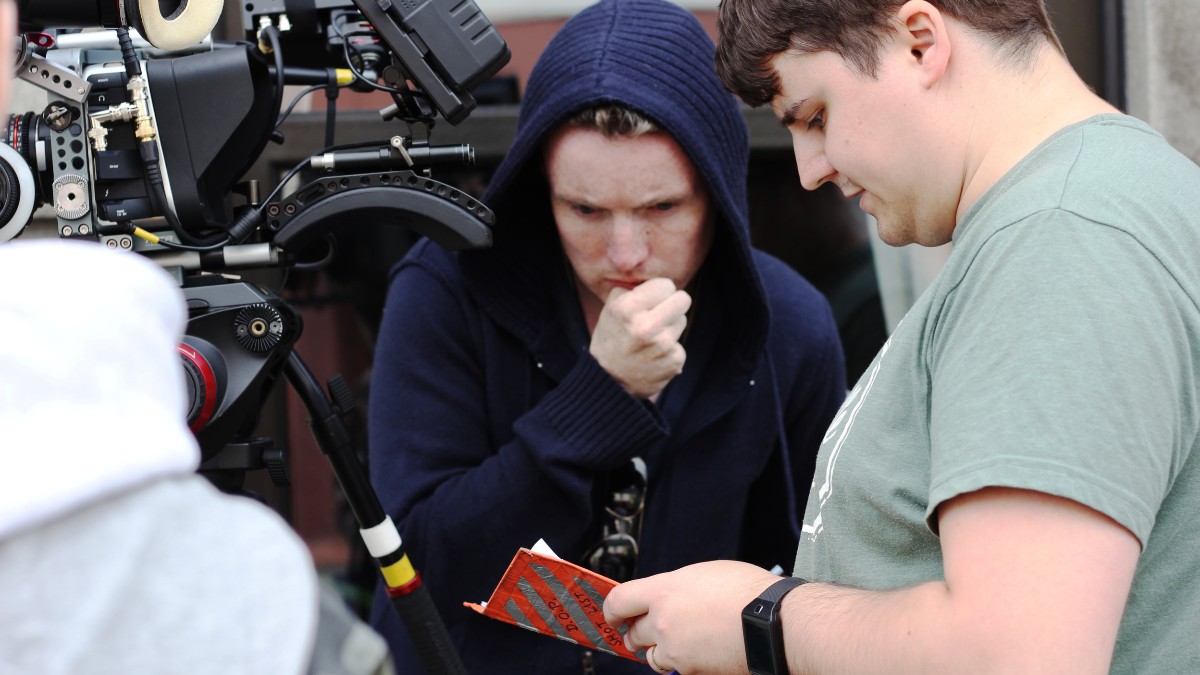
Let’s talk pre-production: take us through a timeline of how you started and ended it?
Adam William Cahill (AWC): Pre-production began with the hiring process. I had the script there ready to go, and I knew what I had for a budget, so I knew it was gonna be a skeleton crew situation. One of the biggest fortunes I had was being contacted by Jannine Benkhardt, who was looking for work experience. She ultimately became my 1st Assistant Director, who basically managed the production in the background during the times that I had to focus on what was right in front of me. When I got my Cinematographer, Stephen C. Walsh, onboard for the production, we sat down and did the shot list together. We had a fantastic working relationship and we’re so in sync with everything, so it was effortless to put our heads together and work out the vision for the storyboard.
And then Jannine and I went to work on the schedule and the call sheets, and all that paperwork element that needs to be sorted. We were always emailing and finalizing deals right down to the last minute, whether it was organizing the extras or booking locations, or hiring costumes and equipment. It’s not the glamorous part of the job, but knowing that all the ducks are in a row before the big shoot dates begin is a huge weight off of the shoulders. And having Jannine share that load with me, and never missing a step on set also, is something that I’ll always be grateful for, and I don’t know how I could ever repay her for it.
What was your rehearsal process and period?
Adam William Cahill (AWC): Strangely enough, we didn’t initially do rehearsals with everyone. I think this was mostly because we had already shot a promo for the original short film that Luke Corcoran had written, and because Luke and Tadhg had therefore already gotten to grips with those characters (and also the fact that we really didn’t know how big this film would become,) we only spent a day or two rehearsing with some of the cast that later came on board when we decided to make the feature. As luck would have it though, we ended up shooting about sixty percent of the film in April of 2017, with the intention of coming back in August to shoot the huge horde scenes. But at that stage, I hadn’t yet hired Stephen C. Walsh as my cinematographer, and I was shooting the film myself on my Canon M60.
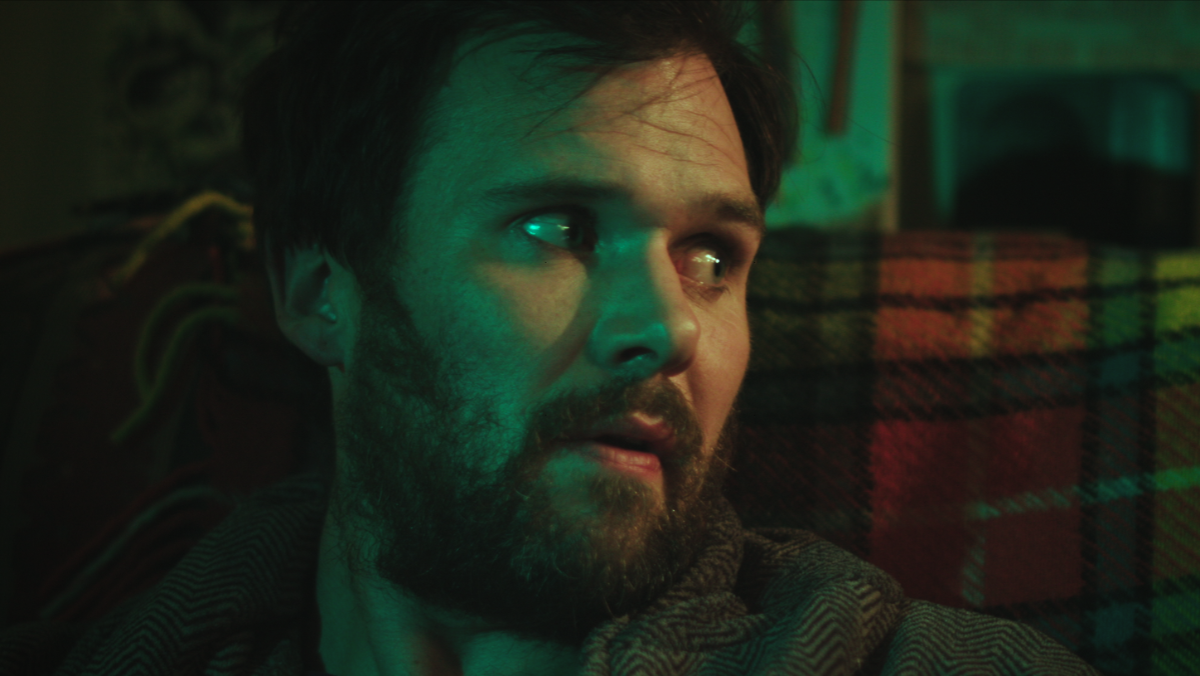
But when I realized that the performances of the cast deserved a better production quality than what I was capable of giving them by spreading myself so thin, I hired Stephen C. Walsh during the summer and asked the cast to come back in August to literally reshoot the entire film. This just goes to show how far you can get when everyone shares your passion for the project because every single cast member said yes to doing everything that they had already done all over again. Which, in the end, meant that April turned out to be the rehearsal that we never had after all.
Did the tight shooting schedule make it harder or easier? How did it affect performances?
Adam William Cahill (AWC): The film was shot over a three-week period, two of those weeks in rural Ireland, and one week in Dublin, with about five days off during that time. A significant amount of the shooting was done at night, which meant we became nocturnal for quite a number of days, and the local supermarket must have been very close to running out of coffee at one point. But if anything, I think the chaos of it all only helped the actors since they had to portray characters in deep distress anyway. And again it goes to show just how much love there was for the project and for the filmmaking craft in general. It’s not everyone who’d work long hours and run on very little sleep in order to get the work done on schedule.
During the film production, what scene (that made the cut) was the hardest to shoot? And why?
Adam William Cahill (AWC): The town hall scene was easily the hardest. Primarily because there were so many extras to manage, and you just knew you wouldn’t get them all back for the second day of shooting, which meant we had to get the whole scene done in one day. There were so many shots to get, and a video had to be played on a projector for the crowd, and the location we had required us to be out by 4 pm, so it was frantic as could be. By 3 pm we still had a ton of shots left and we knew we couldn’t get through it all in time. In the end, we had to pick out all the shots that could be done in a close-up (where the extras didn’t need to be in the background) and come back about a month later to get them. To make matters worse, by the time we came back, the location had repainted the walls from blue to yellow, which meant that we had to shoot the close-ups from a very low angle to try and see less of the walls and more of the ceiling. You can still see the discontinuity if you look for it, but gratefully no one has pulled me up on it yet.
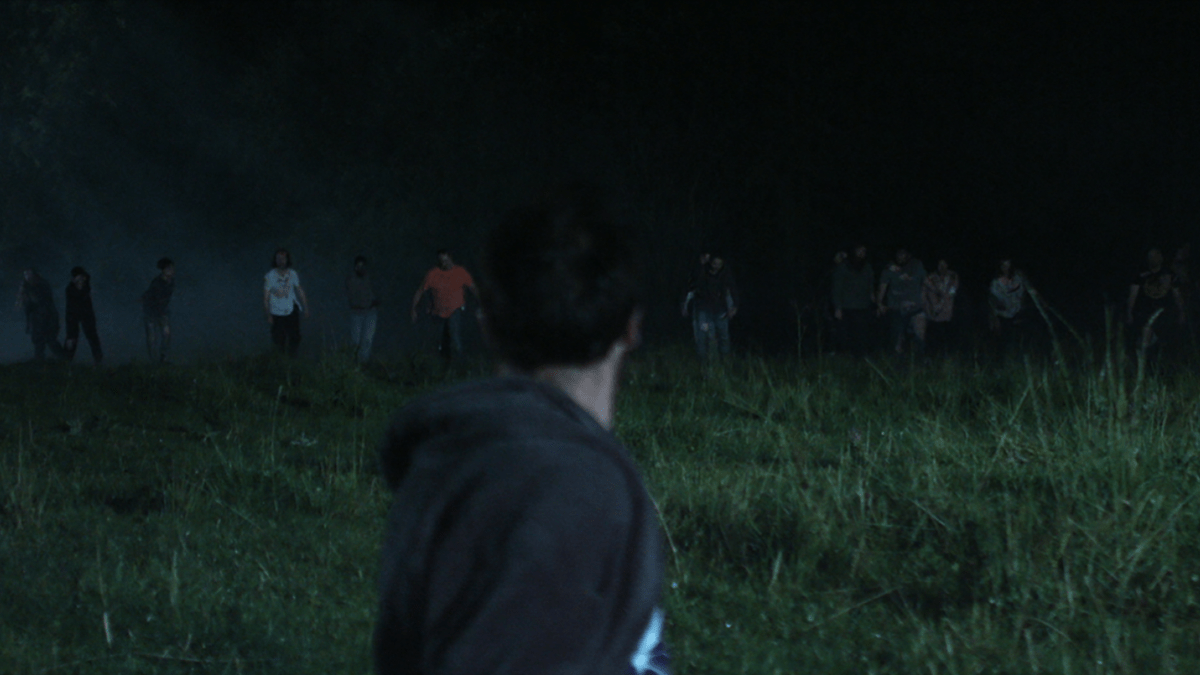
What were the advantages and disadvantages of the way you worked?
Adam William Cahill (AWC): The advantage of making a no-budget indie film is that no one expects it to be particularly good. The only way is up. And we’ve had so much success in terms of awards and reviews that when people get around to asking us how much we made the movie with, jaws drop when they hear the figure. They assume there should be a few more zeros at the end. I’ve made a few short films with no budgets where the reaction has been the same. So that’s always encouraging and tells me I’m doing something right. Another advantage is that you have to think outside the box for how you’re going to pull off the actions scenes, stunts, or effects because the purse strings aren’t going to help you any. But that definitely breeds creativity, and that’s a plus for me. The disadvantage is simply the scheduling. You can’t ask people to work for two months if payment isn’t guaranteed without the film’s success. So the fact that I had three weeks to do everything was very stressful. But it’s also a heck of a good time.
What was the experience like of working with a small shooting crew?
AWC: I actually loved working like this. It’s not that I don’t hope to work on bigger and bigger productions. But with so much to do trying to captain the ship, having fewer moving pieces makes the job that little bit easier to manage. As well as that, we were all living together on set in the same two main locations we were shooting in. And an environment like that is really an opportunity for bonding. We were all friends as well, so in the few hours, we got here and there where we weren’t working or sleeping, we got to relax with a few drinks and get the guitar out. We’d sit around a fire and have so much fun. Which ultimately kept us in the best spirits to carry on with the tremendous workload we had in front of us. I honestly wouldn’t mind working this way again in my career. I’d love it.
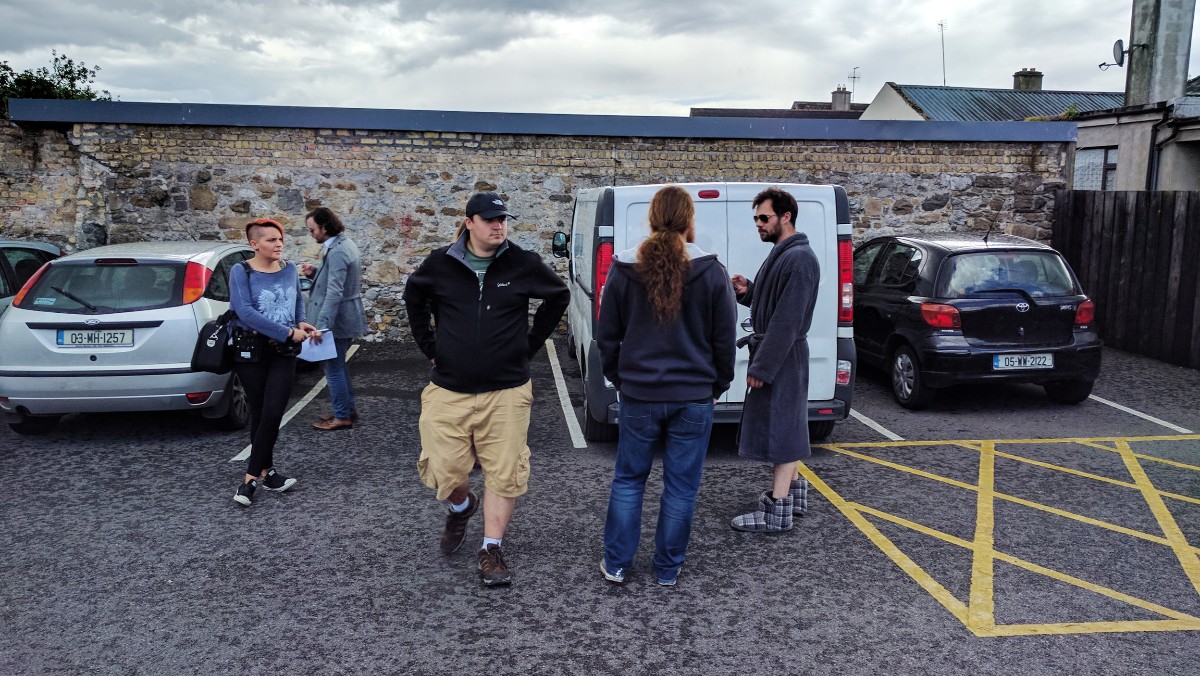
The film looks stunning. How did you get such a good look when shooting so fast?
AWC: Thank you very much for saying so. It’s a combination of a few factors. The first being Stephen C. Walsh, the one-man film crew. He knows what he’s doing with a camera. We used his Black Magic which is an amazing machine. He lit all the scenes with a great artistic eye. And his experience not only aided in orchestrating very quick setups and turnarounds but also in making some important decisions regarding shots, which ultimately led to having some great images for the film. The next component is the production design. Our designer was Margot Cullen. She came into the “family home” and turned it into a house that looked really lived-in by these characters. All the bedrooms, the kitchen, but especially the living room… incredible detail.
Production Designers are heroes where the imagery within the film is concerned, and you absolutely cannot make a great-looking film without one. And Margot is a star. And lastly, the color grade in post-production adds the cherry on top. I didn’t have an awful lot of color grading experience going into the edit, but I was definitely confident in giving it a try. The first few drafts were probably awful, but I had a couple of years to get it right. Unfortunately, we ran into some post-production trouble with the sound design before I eventually procured the money to hire Robin Sherry Wood to do the job. But the silver lining is that I had a lot of time to work on the edit again and again and again, and I think the hours really brought up the quality of the work.
When did you form your production company – and what was the original motivation for its formation?
AWC: I knew that I’d need a trademark that would be recognizable across all my work, and I don’t really have a desire to be a director for hire (unless the money was outstanding, of course). I like writing my own stories, I like putting the pieces together, and I like editing the final product. Some have called me a control freak, and I guess that’s kinda true. I expect a lot from what we’re making, so I think I feel more comfortable having a lot of that responsibility fall on me alone. So in creating Wild Stag Productions I’ve made a symbol for everything I stand for. And whenever a movie starts with the dueling stags animation, people will know what they’re getting themselves in for. It represents genre storytelling, with an emphasis on narratives that are saying something about the world we’re living in today. I hope it stands for quality, for humor, for heart-breaking emotion, and will someday stand out as a beacon of what Irish talent can offer to the greater artistic community.
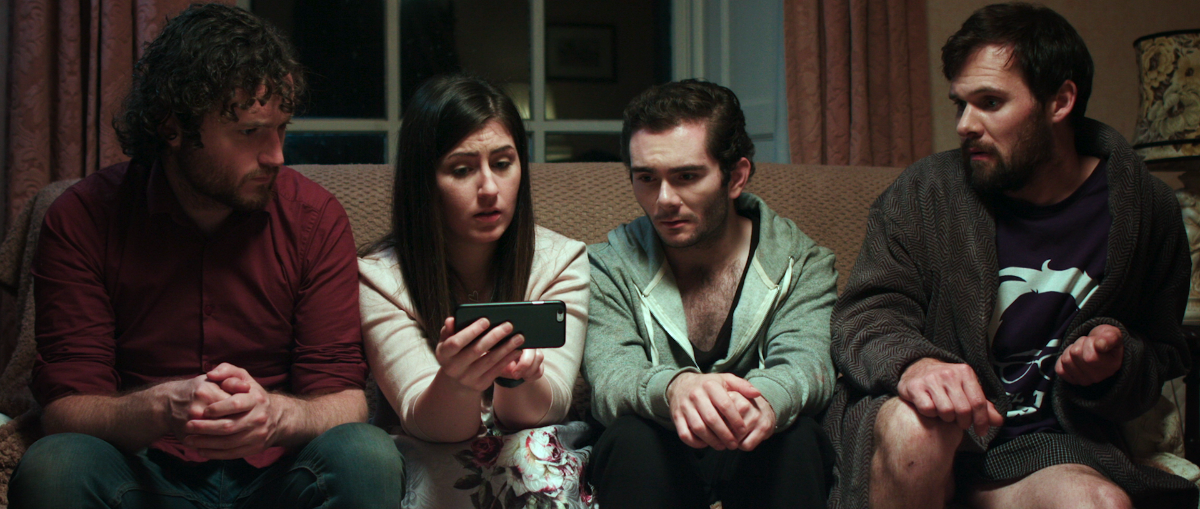
What was the first project out of the gate?
AWC: Follow the Dead was my first ever project actually. Excluding my end-of-year college project that is. It was called “Inertia” and it also starred Marybeth Herron and Tadhg Devery, who I met during the casting for that film. We’ve since become great friends.
What about independent filmmaking and the business do you still struggle with?
AWC: I think to be an artist you have to be very “right-brain” dominant and to be a businessman you have to be very “left brain” dominant. And though I think I can kinda switch from one to the other when I need to, I feel I’m mostly right-brained. I’m more interested in creativity than analytics. But the indie filmmaker needs to be very strong in both areas because you need to be able to build an audience and do your research with regards to the market and investor interests and whatnot. I’m still struggling in that area as my mind is always focused on stories. Ideally, I’d have a partner who could be building the fanbase for me and networking with the right people so that when the projects are finished and ready to roll out, there’d be people ready and excited to see them. That’s something I’m still learning, and a growing audience is likely gonna take me some time to achieve.
Where do you think your strengths lie as a filmmaker?
AWC: I read a lot. I’ve got screenwriting greats on my bookshelf such as Robert McKee, Syd Field, John Yorke, John Truby, and I’m pretty sure I’ve got a very strong grasp of storytelling foundations; not only how stories work, but why, and what their value is in the first place. This helps me write stories that I believe are worth telling. I’m a very visual director as well. I can see what I’m writing. The blueprint may be the script, but the movie is already made in my head, and others tend to get a good mental picture when I describe it to them. I think I articulate myself very well, which is helpful.
Let’s talk about finance. How did you finance the film?
AWC: It was simply a case of getting a loan for ten thousand euros from the bank, and then I had a handful of very close friends and family who believed in what I was doing who contributed very generous sums of money to get us to the figure we needed to get it all done.
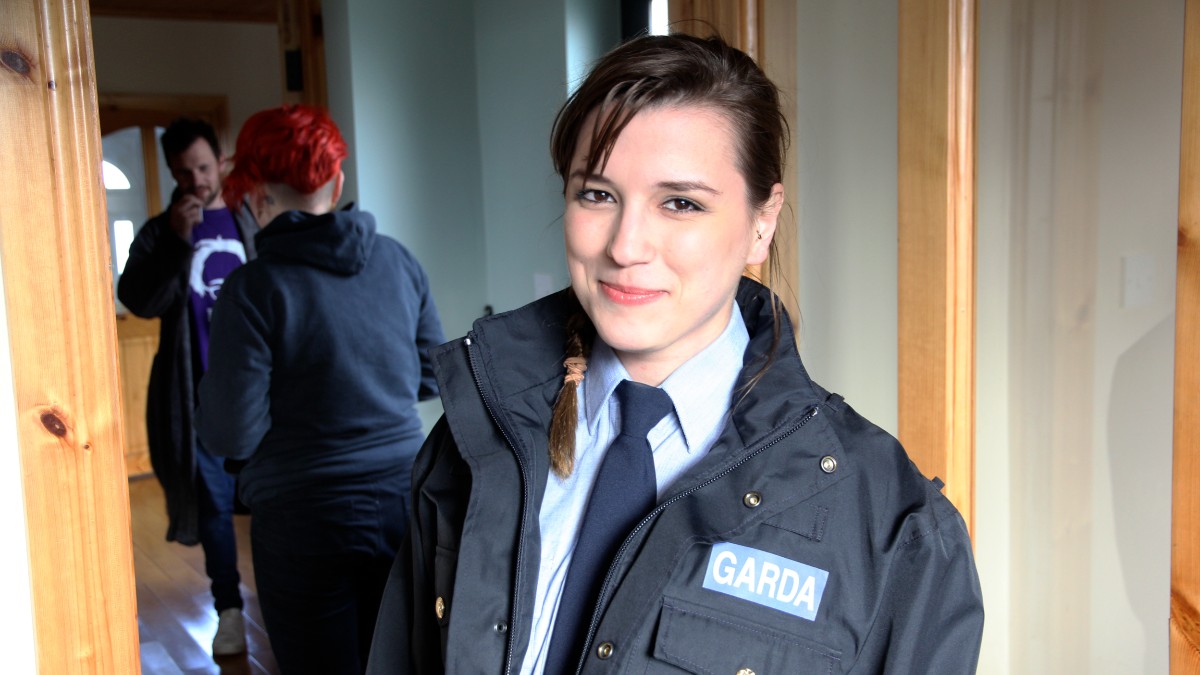
How much did you go over budget? How did you manage it?
AWC: We never went over budget on the shoot. I knew what I had to work with and I just made sure not to overstretch in any area. The problem came in post-production. We were left hanging at one stage when someone was unable to fulfill their role to completion, and then I had to wait a while to get enough money together again to hire someone new. That was heartbreaking, and it took over a year to achieve. But my motto is “everything happens the way it’s supposed to”. And I’m overjoyed with how things turned out in the end.
How important is marketing? Talk about the festival tour? Do you think a project can make a dent without it nowadays?
AWC: Like with absolutely any product, you need your customers. Without them, you really are a starving artist. So marketing is absolutely essential. It needs to be learned, or you need to budget for someone who can do it for you. They say 50% of your budget should be for the film, and 50% should be for promotion. I learned that way too late, but it’s probably for the best in this case. Festivals can definitely help you in this regard if you get notoriety at a top-tier festival. One of the Big 5 is best. But they’re not the only game in town anymore. The Internet is your friend. You can slowly build an audience online if you can continue to share content with them. But they’ll grow very slowly unless you give them something that goes viral. But you can’t plan for that. It’s likely going to be a case of playing the long game. But if it’s what you love, it’s worth taking a long time to do it.
Tell us about marketing activities or efforts on this project – and how it worked or didn’t work?
AWC: At the moment we’re still doing the festival circuit, and just building up the fanbase on Facebook, Instagram, and YouTube by sharing our successes and small pieces of content. I think ultimately if things don’t blow up in the coming months, I’ll be investing in some PR for sure. But at the moment, my head just can’t get out of these dang stories.
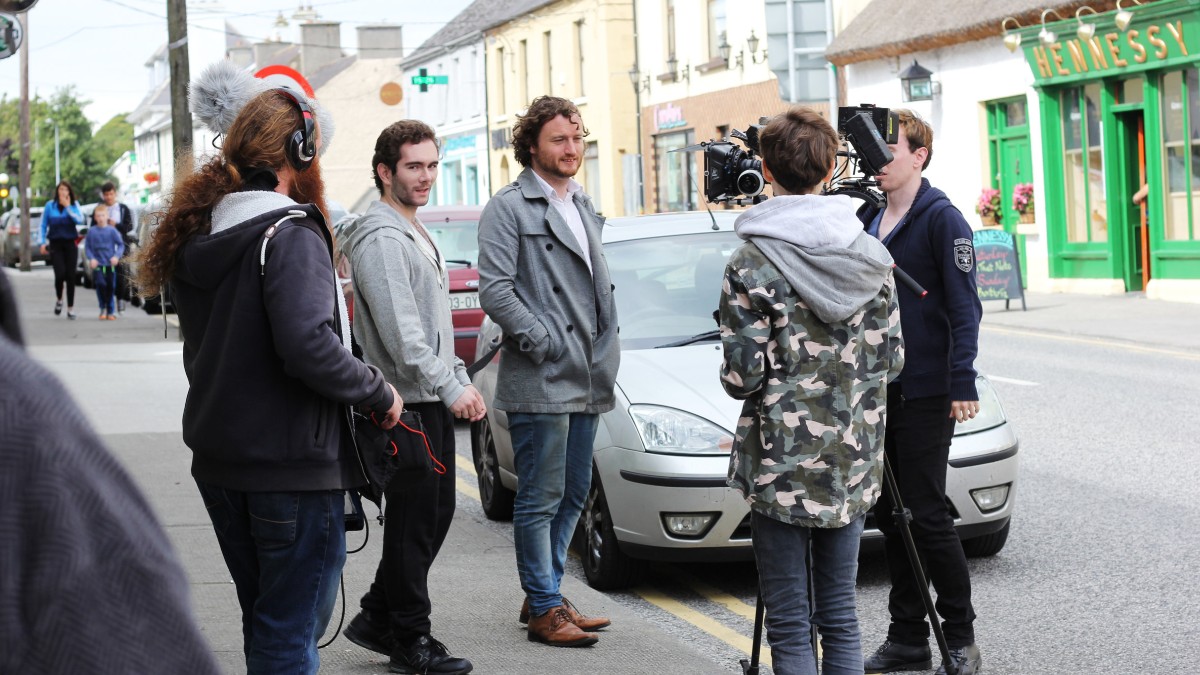
What do you hope audiences will get from the presentation of your film?
AWC: I watched the film in front of an audience only once, and as soon as I heard the thunderous laughter from the very first scene, I was satisfied. What I want is for people to be entertained first and foremost. If you can’t entertain, you can’t keep their attention, and that’s the currency of the realm. I need their attention so that they wanna know more about Wild Stag Productions, look at what we’re doing next, and follow our every move. And ultimately, I want them to do that because the stories in my movies are ones that might just hit a nerve with people. With Follow the Dead, I want them to consider how capable they are of dealing with trauma if it shows up in their lives. With other movies, there’ll be other messages to glean. But hopefully wrapped up in a gut-wrenching, heart-warming, rip-roaring, heck of a good time.
What else have you got in the works?
AWC: Right at this very moment I have the script for Follow the Dead 2 open on my laptop on my screenwriting app. We’re going super ambitious with that one. I’ve also written a short script that I’m planning to shoot before the end of the year. And I’m also in the outlining stage of writing an Irish Neo-Western set in the not too distant future; After the rise of Marxism has left the 99% high and dry, with the 1% now living in the high towers of dystopian Dublin, those who managed to survive the ravages of the Communist agenda are left to fend for themselves in the wild wild “wesht”. I really do love me a genre flick.
Tell us what you think of the Case Study for Follow the Dead What do you think of it? Let’s have your comments below and/or on Facebook or Instagram! Or join me on Twitter.
Follow Adam William Cahill on Social Media
Website
IMDb
Facebook
Instagram
YouTube
MORE STORIES FOR YOU

